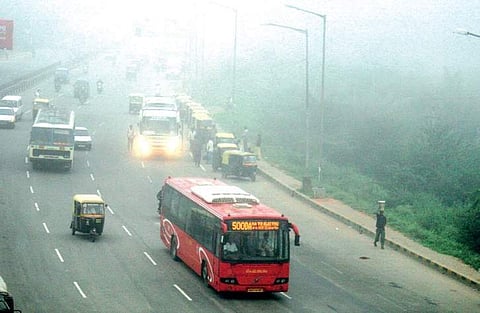

BENGALURU: Residents’ associations which have been frequently raising their voice against rampant commercialisation in their areas may have something to cheer about. The Provisional Revised Master Plan 2031 has done away with the concept of Mutation Corridors, which was largely a blanket permission granted to property owners in specific areas to build commercial structures.
The previous Master Plan for the city, the Comprehensive Development Plan 2015, had billed radial corridors and main arteries as Mutation Corridor Zones. “The entire Outer Ring Road, the Intermediate Ring Road and the five radials of Hosur Road, Mysuru Road, Ballari Road, Bannerghatta Road and Magadi Road were classified as Mutation Corridors.” A top BDA official said, “We believe this kind of open permission has killed the city. We have now put hurdles in the new plan so that commercialisation is kept in check.”
BDA has proposed removal of Mutation Corridors, the official added. Explaining the concept introduced in 2015, the official said that anyone who owned property in these areas could build a house or commercial building there. “Say, someone has a piece of property in any of the five radial corridors. They would buy more land and commercialise the entire property,” he pointed out.
The blanket permission helped real estate developers hugely and IT/ITeS industries mushroomed, the official said. “The negative impact was that they never bothered to develop alternative roads, creating so much stress on the existing ones,” he said. The massive development witnessed on Sarjapur Road, Airport Road and Electronics City are on account of this free hand given to property owners, he pointed out.
If one wants to convert residential property to commercial now, it could cost up to `3 lakh per acre (`75 per sqmt) the official said. “The cost is not high, but getting the permission would be a lengthy affair with public notifications issued and government nod required. This would definitely deter commercialisation,” the official said.
As per the new proposal, those who have properties along roads exceeding 24 metres (or 80 ft) in width are permitted to convert only a small portion of their property into commercial ventures. “The permissible land for development will be only 2.5 times to 3 times the width of the road.” And this was allowed for areas beyond Zone-A (areas within ORR Road) and Zone-B (areas just outside ORR).
However, some concession has been given to those possessing large properties in Zone-B if it has been marked as ‘Commercial’ in the Revised Master Plan. “If the area is more than 1,000 sqmt, the owners can put it to ancillary use (setting up of offices, clinics and similar businesses which will not affect area residents in a big way,” the official said.